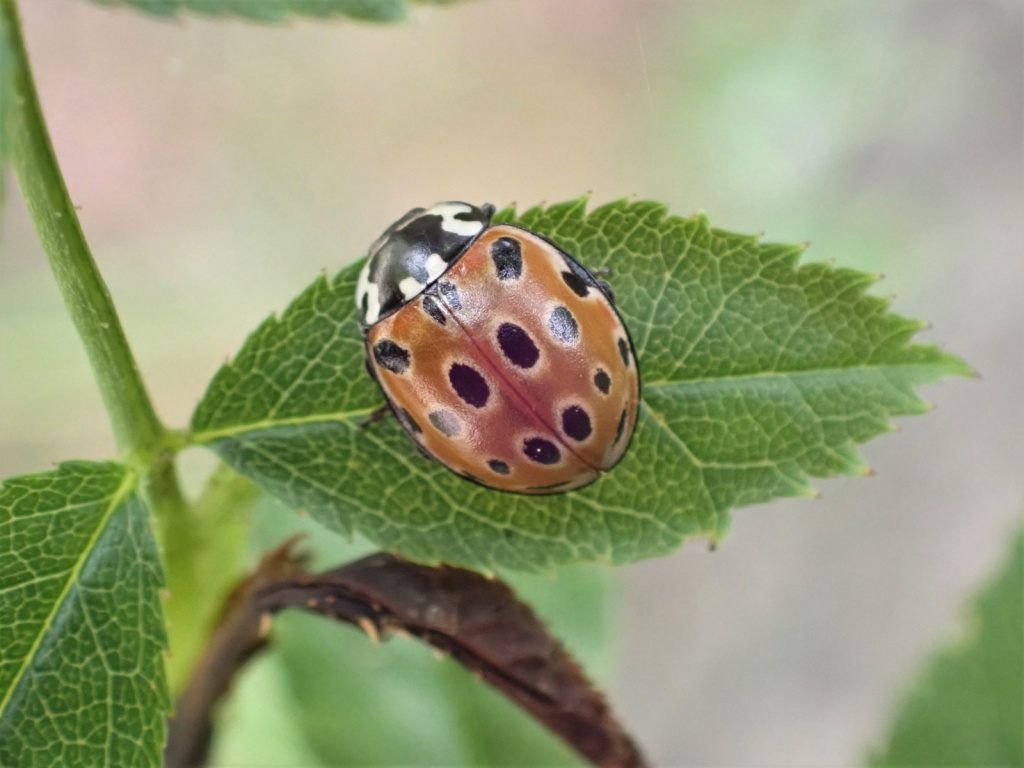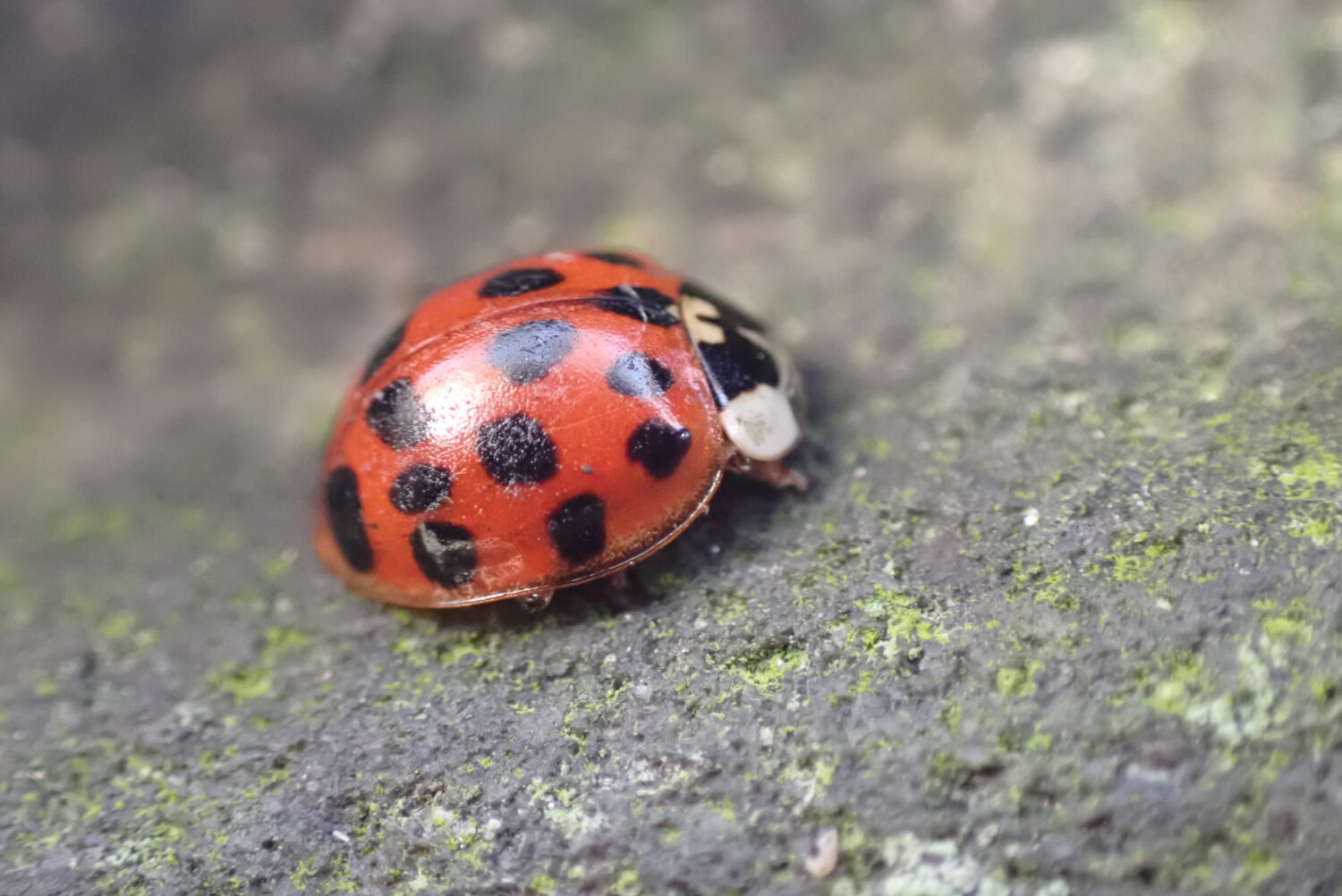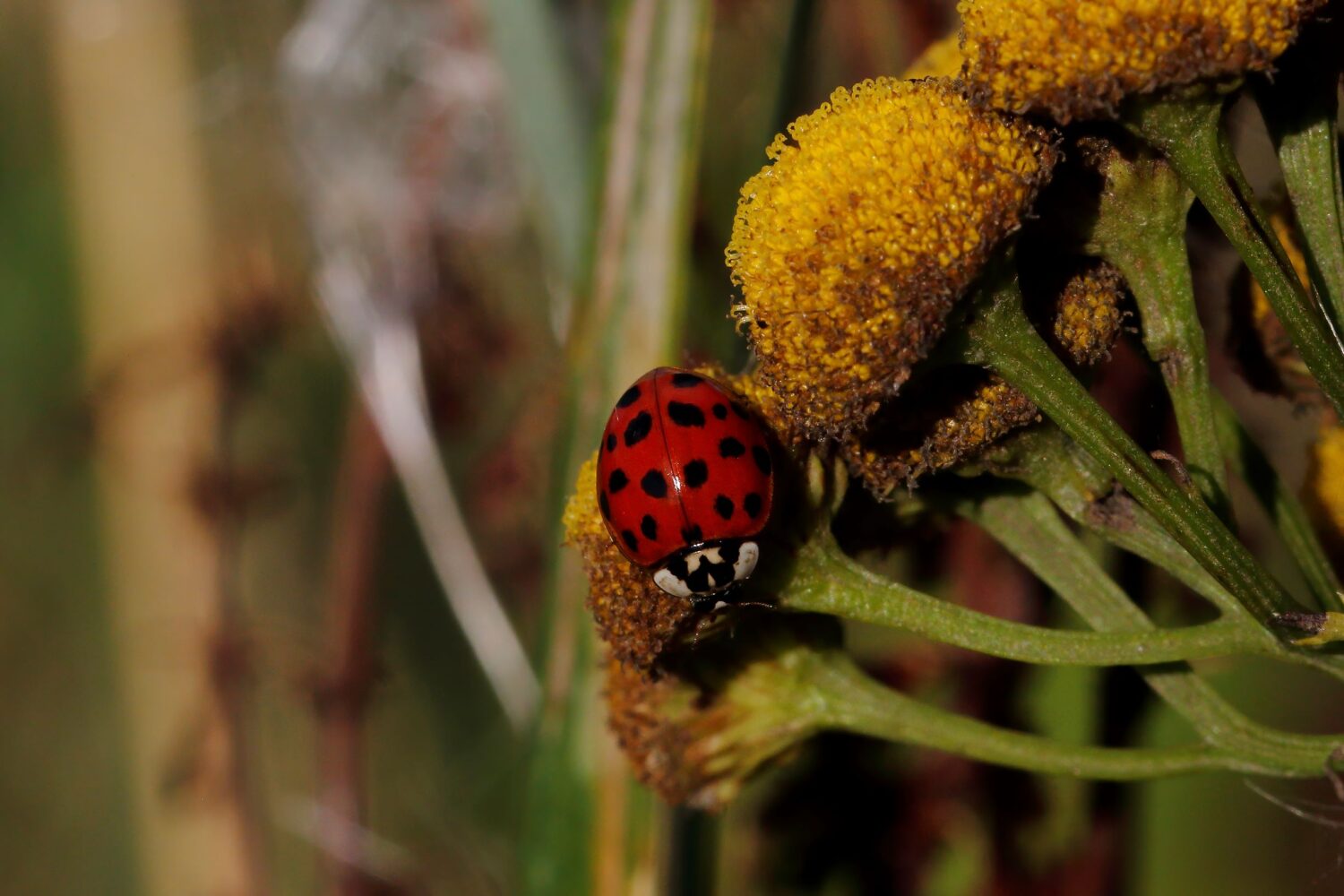The largest ladybird in Britain, the Eyed Ladybird is seldom seen due to its preference for coniferous woodland. Can you spot one?
Fast facts
- Common name
- Eyed Ladybird
- Scientific name
- Anatis ocellata
- When to see it
- Year round
- Habitat
- Coniferous and mixed woodland
Description
The largest species in Britain, the Eyed Ladybird is an impressive red ladybird. It is distinctively patterned, with pale rings around its black spots and an M-shaped mark on its protonum.
Identification
A large red ladybird with black spots that generally have pale rings around them. Distinctively patterned, its protonum has white markings with a black M-shaped mark. The Eyed Ladybird usually has 15 black spots but this can vary from zero to twenty-three.
Ecology
A conifer specialist, the Eyed Ladybird is a predatory ladybird that feeds on aphids. Despite its large size, it is rarely seen due to its arboreal habit in conifer trees. Found in coniferous or mixed woodland, it’s a ladybird particularly associated with Scots Pine. Look out for this species anywhere there are conifers.
Similar species
Given its larger size, this ladybird is easily confused with the Harlequin. However, the Harlequin lacks pale rings around its spots.
Did you know?
The Eyed Ladybird is the largest ladybird species in Britain and Ireland.
Regional distribution
Likely an under-recorded ladybird, the Eyed Ladybird has a scattered distribution in Northumberland and County Durham. Recent sightings as part of the North East Ladybird Spot have come from a number of sites in Newcastle showing that this species can also be found in urban areas.

Spotted this ladybird?
Have you spotted this ladybird? Share your sighting with the North East Ladybird Spot and contribute to the study of our region’s ladybirds.



